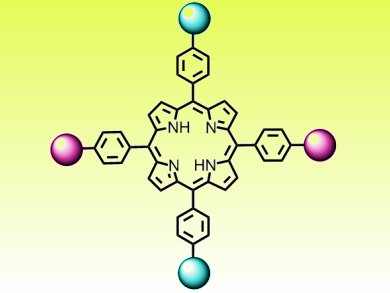The bottom-up construction of covalently bound molecular architectures in a well-defined arrangement remains a challenge in nanotechnology, according to researchers at the Fritz-Haber-Institute of the Max-Planck-Society and colleagues in Italy.
They demonstrated how polymerization can be controlled on a surface by hierarchical and substrate-directed growth to make quite complex structures. They use porphyrin-based molecular building blocks with bromine and iodine substituents. The halides act as leaving groups that have different activation temperatures, so can be activated sequentially.
Their approach allows them to create improved networks as well as the fabrication of heterogeneous architectures with high selectivity that could be used to build multi-component systems.
- Controlling on-surface polymerization by hierarchical and substrate-directed growth,
L. Lafferentz, V. Eberhardt, C. Dri, C. Africh, G. Comelli, F. Esch, S. Hecht, L. Grill,
Nature Chem. 2012.
DOI: 10.1038/nchem.1242



![Synthesis of [c2]Daisy Chains via Mechanochemistry](https://www.chemistryviews.org/wp-content/uploads/2025/04/202504_RotaxanesWithSolidStateMechanochemistry-125x94.png)
